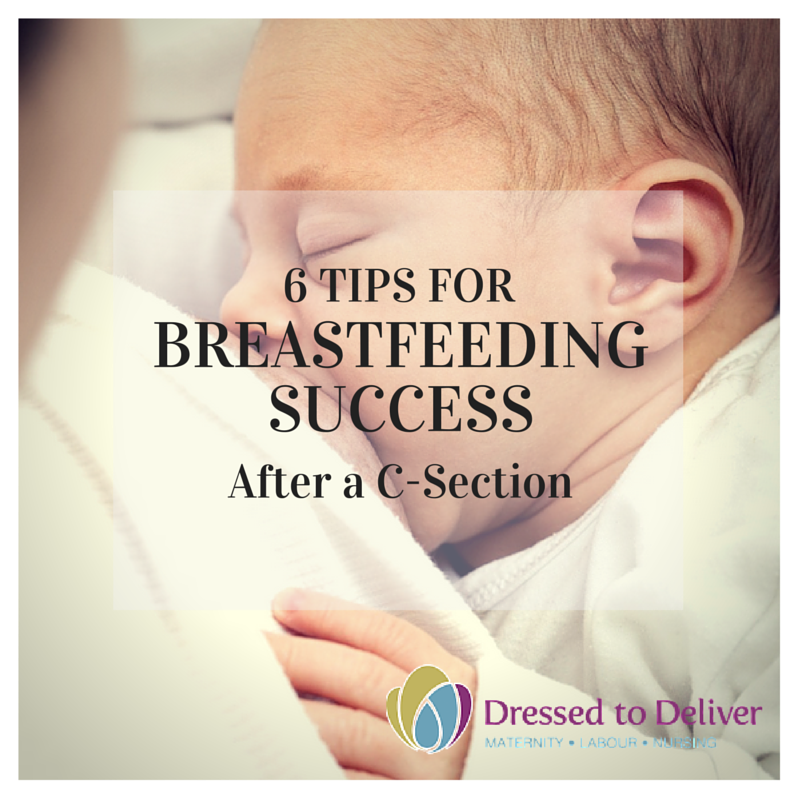When can I start breastfeeding my baby?
You could breastfeed your baby immediately after the surgery depending on how you feel and how your baby is doing. However, some women who had a general anaesthetic for the operation may feel too groggy to do so immediately. If after 12 hours you are still not able to do so, you could ask help from the midwives. Using a pump to express your premilk (colostrums) could be helpful to get lactation started.
Will the medication used during anaesthesia harm my baby if I breast feed?
The medication used in general anaesthesia and epidural anaesthesia will not cross your breast milk. So, you do not need to worry about harming your baby if you breast feed after a Caesarean section.
How could I establish breastfeeding effectively?
Some women find it uncomfortable to breastfeed after an operation. The midwives are most willing to help if you find it difficult to breastfeed. Certain techniques such as placing a pillow on your lap under the baby or lying on your side to nurse can be helpful to ease the process of breastfeeding.
For further information on breastfeeding, please refer to our article on Why Breast Feed?
What are the extra benefits of breastfeeding after a Caesarean Section?
In a baby who is born naturally (vaginal birth), the baby come in contact with the good bacteria such as Lactobacilli and Bifidobacteria in the mother. The baby gets colonized by those good bacteria which will in turn colonized the newborn baby’s gut and trigger the immune system. This will help to strengthen the baby’s immunity and protects them against infections.
Compared to a baby who is born naturally, a baby who is born via Caesarean section experiences delay in acquiring good bacteria from the mother because they miss out on this process. Recent studies have shown that Caesarean section deliveries may be associated with increased risk of asthma, allergies and gastrointestinal infections.
Colostrums or the foremilk is rich with antibodies, which can help to protect the baby against infection and strengthened their immunity. Therefore, breastfeeding in a baby who is born via Caesarean section has extra benefits. In addition, breastfeeding require the baby to be in contact with the mother’s skin, which will enhance the transfer of good bacteria to the baby. Breast milk is also rich in good bacteria such as Lactobacilli and Bifidobacteria, which is helpful in protecting the baby against infections.
What if I am not able to breast feed due to other reasons?
Although breast feeding is the BEST for your baby, we appreciate the fact that a small number of mothers could not breast feed or are found not suitable to breast feed due to medical reasons. Please refer to our article on Infant Formula if you want to know the alternatives to breast feeding. An infant formula fortified with Lactobacilli and Bifidobacteria may be helpful to enhance the transfer of good bacteria to these babies.
REFERENCES:
(1) Kero J, Gissler M, Gronlund MM et al. Mode of Delivery and Asthma- Is there a connection? Pediatr Res. 2002; 52(1): 6-11.
(2) Pistiner M, Gold DR, Abdulkerim H, Hoffman E, Celedón JC. Birth by cesarean section, allergic rhinitis, and allergic sensitization among children with a parental history of atopy. J Allergy Clin Immunol. 2008 Aug;122(2):274-9. Epub 2008 Jun 20.
(3) Eggesbø M, Botten G, Stigum H, Nafstad P, Magnus P. Is delivery by cesarean section a risk factor for food allergy?J Allergy Clin Immunol. 2003 Aug;112(2):420-6.
(4) Grönlund MM, Lehtonen OP, Eerola E, Kero P. Fecal microflora in healthy infants born by different methods of delivery: permanent changes in intestinal flora after cesarean delivery.J Pediatr Gastroenterol Nutr. 1999 Jan;28(1):19-25.
(5) Grönlund MM, Gueimonde M, Laitinen K, Kociubinski G, Grönroos T, Salminen S, Isolauri E.Maternal breast-milk and intestinal bifidobacteria guide the compositional development of the Bifidobacterium microbiota in infants at risk of allergic disease. Clin Exp Allergy. 2007 Dec;37(12):1764-72. Epub 2007 Oct 16.
